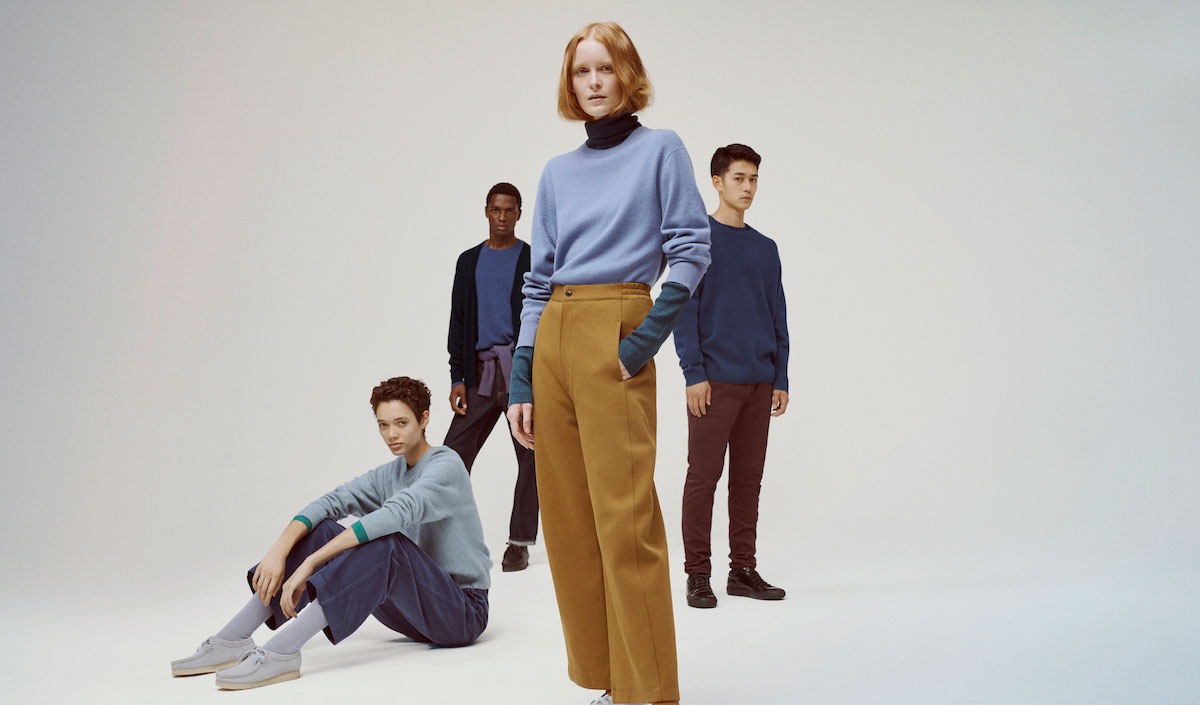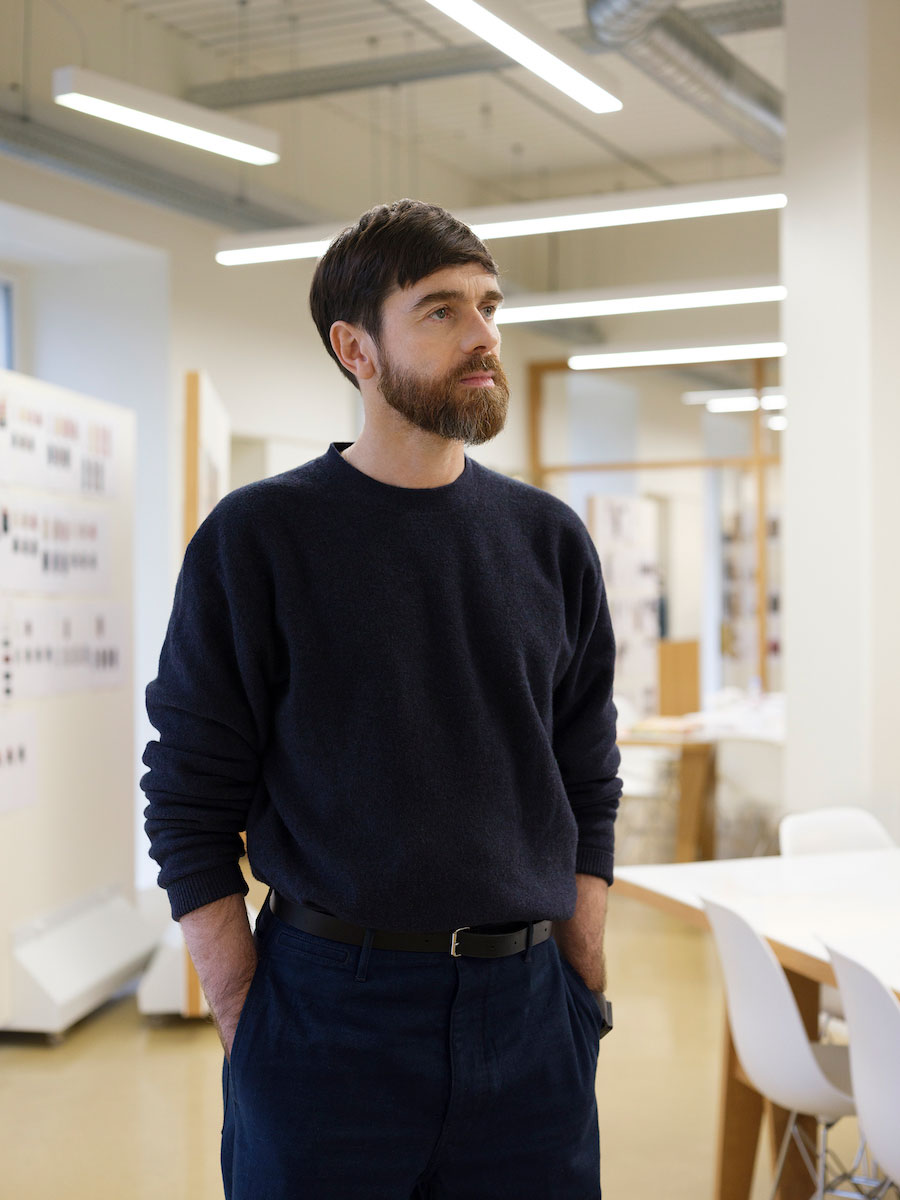We caught up with the fashion favourite and UNIQLO U director.

Yesterday, fashion designer Christophe Lemaire showed his spring/summer 2020 collection in the courtyard of the Parisian art school École Duperré. And as much as we—once more—adore his designs, unfortunately our bank accounts don’t always have that same opinion. No reason to be sad, though; since 2016, Lemaire is also the creative director of UNIQLO U, taking his sophisticated signature to the high street. How, exactly? Well, that’s exactly what the designer told Glamcult when we recently visited UNIQLO’s R&D centre in Paris. Tune in!
There’s an obvious sense of continuity in your collections for UNIQLO—but can you start by discussing what’s changed this season?
This collection was set three years ago with this clear concept of making an avant-garde or elevated version of LifeWear. That’s not easy to explain because people were always projecting the previous UNIQLO x Lemaire collaboration, which was super successful. UNIQLO collaborates with many brands, such as JW Anderson, and I had to insist: this is not that same kind of collaboration. It’s my point of view and my taste, but it’s a real LifeWear concept. Made for all, universal, timeless and easy to understand but with style and refinement. It’s the same concept that we try to improve every season.
What are the similarities and differences in terms of cut, silhouettes and colour?
We wanted to escape from streetwear and activewear. That’s a big trend and it’s not going to disappear, of course, but as you can feel it’s a bit saturated. We were very interested in this formal vibe of the late ’60s in Paris, which we called ‘student chic’. Corduroy suits, turtlenecks and menswear wardrobe classics like truck driver jackets, button-down shirts and straight-leg trousers…
When you work on a collection like this one for UNIQLO, there’s a sense of limitation at the beginning; you have to work within a framework and respect it. Some creators can experience this as a frustration while others find a deeper creativity this way. Is that your take on things?
Yes, of course, you need a frame or otherwise you can get lost in creativity. And, as a designer, nothing is worse than a white page. Even here, you need a kind of mood or a pitch. And when you have that from the beginning it clarifies everything. I don’t understand designers that sign with a brand but don’t want to work with the frame or limitation of that brand. When you decide to design for a brand like UNIQLO, you understand what UNIQLO is about. It’s universal, international, industrial, and it has a good price point… I was lucky because I could pick my own team with elevating UNIQLO in mind. It wasn’t only about looking for talent; it was also about the ability to understand what UNIQLO is about and their interest in that. That was a very important first step in recruiting a dedicated team. One message I gave to the team is that, visually, the product must be immediately comprehensible. It shouldn’t only be cool for your fashion friends, but also for your mother or uncle.

There seems to be a sense of sobriety.
Yes, I think it’s great that there’s a lot of eccentricity in the fashion world, but we also need good pieces for every morning when you need to get dressed in five minutes! The problem is that fashion has sort of forgotten that in the past 30 years. It’s all about creating noise and we need that, but we also need to go back to a certain common sense with clothing. That’s why I was so interested in working for UNIQLO; not speaking too loudly is an essential dimension of the clothes.
For you, what’s the difference between working on menswear and womenswear?
It’s different for sure. The boundaries are dissolving. Womenswear fabrics are becoming tougher and more solid. For menswear the vocabulary is smaller but it’s also changing a lot. There’s more room for diversity, fluidity, sensuality… At UNIQLO, however, we are mostly interested in: what’s the perfect archetypal piece? If you do a duffel coat, how do you do it well? There’s so many wrong duffel coats on the market. We’re not here to replicate, so how can we be faithful to the authenticity of it and yet make it relevant for today? It’s very much a design approach.
Do you think in 20 years there’s a possibility for perfect unisex fashion?
I don’t know! I think it’s very interesting to see that at UNIQLO, for instance, the shop staff tell us more and more women are buying menswear and men are buying womenswear. There will likely always be boundaries, and there are body specificities, but there’s a lot of room and freedom in-between…
What makes for a classic or archetype in fashion?
I really like visual dictionaries such as Macmillan, where I go to the textile section and find that very inspiring. There’s a super normality and the concept is very ’90s. I would also refer to Twin Peaks and its styling, which is very generic and not too ‘fashion’. We have that direction in mind when we design. Then there are other contemporary elements like functionality. I really like this idea of the ‘supernormal’ and making it anything but boring.
Words by Glamcult
Follow Lemaire on Instagram
www.uniqlo.com
Notifications